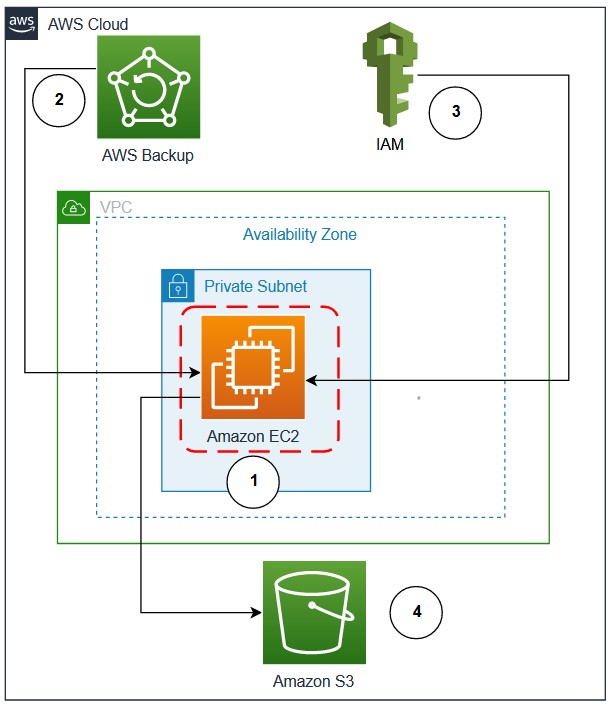AWS Architecture Blog
Category: AWS Identity and Access Management (IAM)
Amazon Bedrock baseline architecture in an AWS landing zone
In this post, we explore the Amazon Bedrock baseline architecture and how you can secure and control network access to your various Amazon Bedrock capabilities within AWS network services and tools. We discuss key design considerations, such as using Amazon VPC Lattice auth policies, Amazon Virtual Private Cloud (Amazon VPC) endpoints, and AWS Identity and Access Management (IAM) to restrict and monitor access to your Amazon Bedrock capabilities.
Content Repository for Unstructured Data with Multilingual Semantic Search: Part 1
Unstructured data can make up to 80 percent of data in the day-to-day business of financial organizations. For example, these organizations typically store and read PDFs and images for claim processing, underwriting, and know your customer (KYC). Organizations need to make this ingested data accessible and searchable across different entities while logically separating data access […]
Deploying IBM Cloud Pak for Data on Red Hat OpenShift Service on AWS
Editor’s note, October 2024: This post is now obsolete. For the latest post, refer to Deploying IBM Cloud Pak for Data on Red Hat OpenShift Service on AWS. Amazon Web Services (AWS) customers who want to deploy and use IBM Cloud Pak for Data (CP4D) on the AWS Cloud, can use Red Hat OpenShift Service […]
Using AWS Backup and Oracle RMAN for backup/restore of Oracle databases on Amazon EC2: Part 1
Customers running Oracle databases on Amazon Elastic Compute Cloud (Amazon EC2) often take database and schema backups using Oracle native tools, like Data Pump and Recovery Manager (RMAN), to satisfy data protection, disaster recovery (DR), and compliance requirements. A priority is to reduce backup time as the data grows exponentially and recover sooner in case […]
Identification of replication bottlenecks when using AWS Application Migration Service
Enterprises frequently begin their journey by re-hosting (lift-and-shift) their on-premises workloads into AWS and running Amazon Elastic Compute Cloud (Amazon EC2) instances. A simpler way to re-host is by using AWS Application Migration Service (Application Migration Service), a cloud-native migration service. To streamline and expedite migrations, automate reusable migration patterns that work for a wide […]
Reduce Cost and Increase Security with Amazon VPC Endpoints
This blog explains the benefits of using Amazon VPC endpoints and highlights a self-paced workshop that will help you learn more about them. Amazon Virtual Private Cloud (Amazon VPC) enables you to launch Amazon Web Services (AWS) resources into a virtual network that you’ve defined. This virtual network resembles a traditional network that you’d operate […]
Using DevOps Automation to Deploy Lambda APIs across Accounts and Environments
by Subrahmanyam Madduru – Global Partner Solutions Architect Leader, AWS, Sandipan Chakraborti – Senior AWS Architect, Wipro Limited, Abhishek Gautam – AWS Developer and Solutions Architect, Wipro Limited, Arati Deshmukh – AWS Architect, Infosys As more and more enterprises adopt serverless technologies to deliver their business capabilities in a more agile manner, it is imperative […]
Multi-Region Migration using AWS Application Migration Service
AWS customers are in various stages of their cloud journey. Frequently, enterprises begin that journey by rehosting (lift-and-shift migrating) their on-premises workloads into AWS, and running Amazon Elastic Compute Cloud (Amazon EC2) instances. You can rehost using AWS Application Migration Service (MGN), a cloud-native migration tool. You may need to relocate instances and workloads to […]
Automate Amazon Connect Data Streaming using AWS CDK
Many customers want to provision Amazon Web Services (AWS) cloud resources quickly and consistently with lifecycle management, by treating infrastructure as code (IaC). Commonly used services are AWS CloudFormation and HashiCorp Terraform. Currently, customers set up Amazon Connect data streaming manually, as the service is not available under CloudFormation resource types. Customers may want to […]
Minimizing Dependencies in a Disaster Recovery Plan
The Availability and Beyond whitepaper discusses the concept of static stability for improving resilience. What does static stability mean with regard to a multi-Region disaster recovery (DR) plan? What if the very tools that we rely on for failover are themselves impacted by a DR event? In this post, you’ll learn how to reduce dependencies […]









